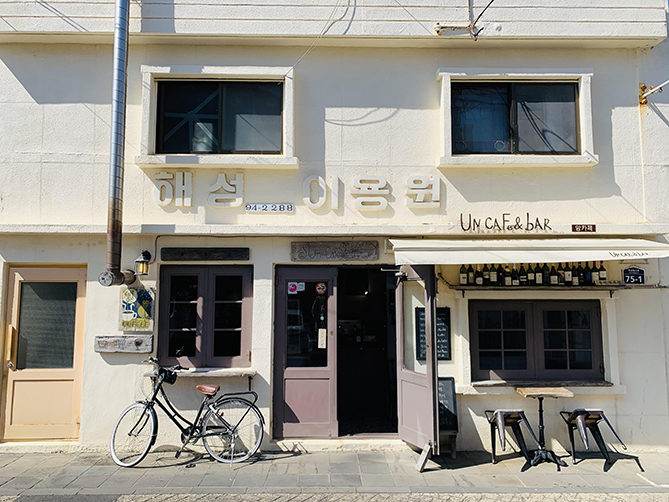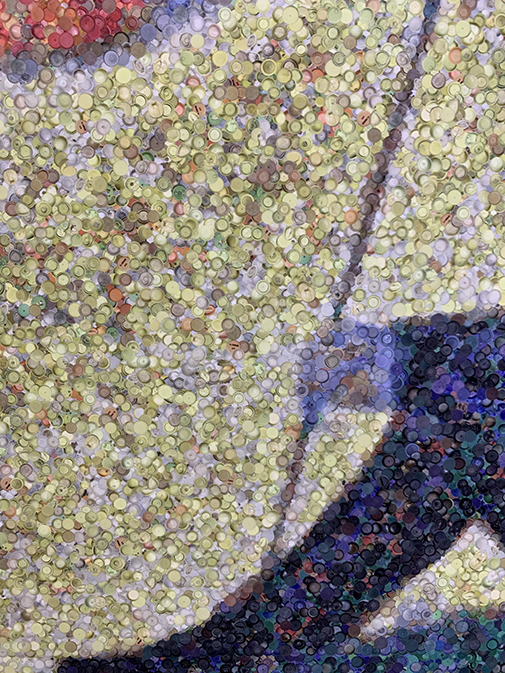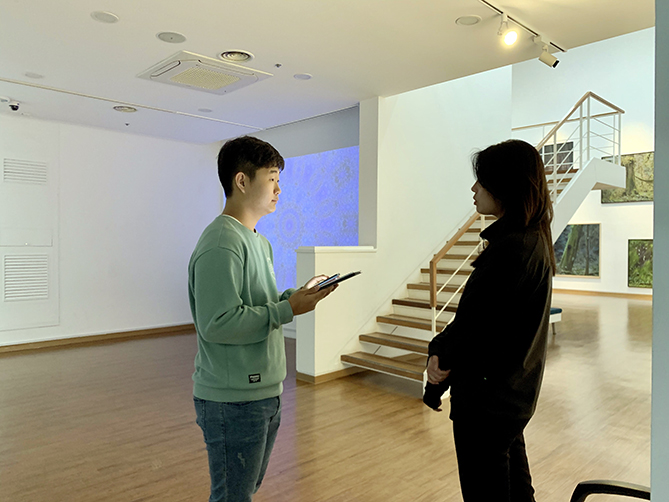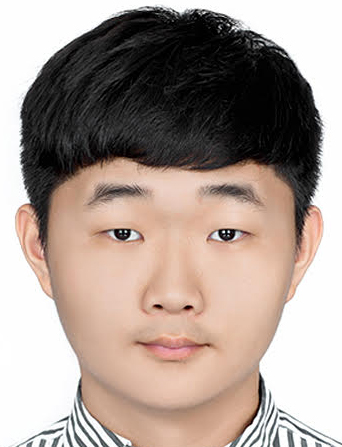Despite the fact that environmental protection is almost always a frontrunning social issue, it is not always easy to find practical ways to protect the environment on the everyday level. Now, however, there are some who suggest new ways of protecting the environment that are resulting in tangible evidence for increased environmental protection. I recently visited Chris Jordan: Intolerable Beauty, an exhibition hosted at the Jeju Museum of Contemporary Arts, and cafes based on an upcycling motif to see how recycling is actually affecting us on a daily basis.
“Upcycling” refers to the use of aged and abandoned products as material to make completely different, products. This concept is originated from developed countries in Europe, where it is already widespread. Since we live in the modern world, which develops very quickly, people who worry about the wastes made by these developments find upcycling necessary. On March 15, 2019, the Youth Strike for Climate, known as campaigns led by Swedish teenage environmental activist Greta Thunberg, took place in more than 500 cities around the world. Likewise, many countries are bringing attention to environmental issues. Upcycling, which sounds similar to and is often confused with recycling, is one method of recycling in that people reuse wastes and/or garbage to create high-quality, eco-friendly products. Upcycling is also used for interior designs, and there are several upcycled cafes that are beloved by many people. For example, recently, there are several buildings on old streets that have been transformed into cafes that are gaining positive attention. These cafes create a new mood by repairing old places, making visitors interested in upcycling and environmental protection after their visit.
There is a cafe that uses the interior design of the old factory in Seongsu-dong, Seoul. It uses the same name, “Daerim,” that the original factory used.

Because it was a factory, the ceiling was high, which made people’s voices not bothering, and it had a wide space. The old products, machines, and pipes make the interior design even more attracting, and people visit this place to take pictures in the cafe.
There was an upcycling cafe in Jeju as well. There is a cafe called “Un Cafe&Bar”, which has the original sign of the place. The building was originally used as a barbershop. The inside was small and cozy, and the interior design made it not look like a barbershop; by contrast, the exterior design is not changed.
Upcycled cafes not only can be used as a marketing strategy but also increased people’s awareness of reusing old products and places. Again, since the retro designs attract people to visit, the visitors would have more chance to get interested in upcycling and environmental protection. While environmental problems are getting worse, it seems that these cafes are playing a major role in making people actually protect environments.

There are also environment preservation-centered campaigns that not only use upcycling spaces but also art. Exhibitions about marine environment protection are often held in Jeju, as in the art and photo exhibition held in the Jeju Museum of Contemporary Arts. Chris Jordan is an artist and a photographer who takes pictures and creates arts about environmental protection. One of his most famous artworks is a picture of an albatross which died after eating plastic garbages. There are other artworks that draw people’s attention: Starry Night by Vincent van Gogh and Venus by Sandro Botticelli. Jordan copied such famous artworks through “point drawing,” using points consist of lightbulbs, trash bags, and torches. The incorporation of widely-known paintings for his artworks, gives people an opportunity for introspection on environmental issues.
The writer was able to interview two of the docents and learn how Jordan’s artworks affect people.
Docent Yeon-wu Hwang said that people initially look at the artworks that they already know, and, as they look at the artworks closer, they get shocked by the fact that the artworks are created with a number of wastes--this, according to her, makes people interested in the message that Jordan conveys.

Another docent Jin-ok Lee mentioned that the number of wastes that are used in Jordan’s artworks make people interested in environmental problems.
They were then asked to answer the people’s reactions to the artworks.
For Hwang, she could see people shocked by the artworks; to be specific; people were shocked by the huge numbers of the wastes and his tenacity.
Lee mentioned that many schools visit for field trips and said that she was encouraged by the fact that the young generation is becoming interested in environmental problems.


Even though experiences from listening make people be aware of certain problems, it usually ends up just getting a bit of motivation that would be easily forgotten. However, when people actually see and feel, it gets different; people actually become aware because, as is scientifically proven, humans are by nature easily stimulated by our vision. In fact, impactfully motivating people is more significant than only suggesting new and efficient ideas for preserving the environment. When people form personal connections to environmental issues and problems, people would more likely to have more interest in and actually actively participate in conservation campaigns. In this sense, these days, in which environmental problems are getting worse, various upcycling spaces and creative artists clearly trigger people to actually make the transition from awareness of problems to environment-preserving actions.

Shinyong Park
Sophomore (Grade 10)
Korea International School Jeju Campus

